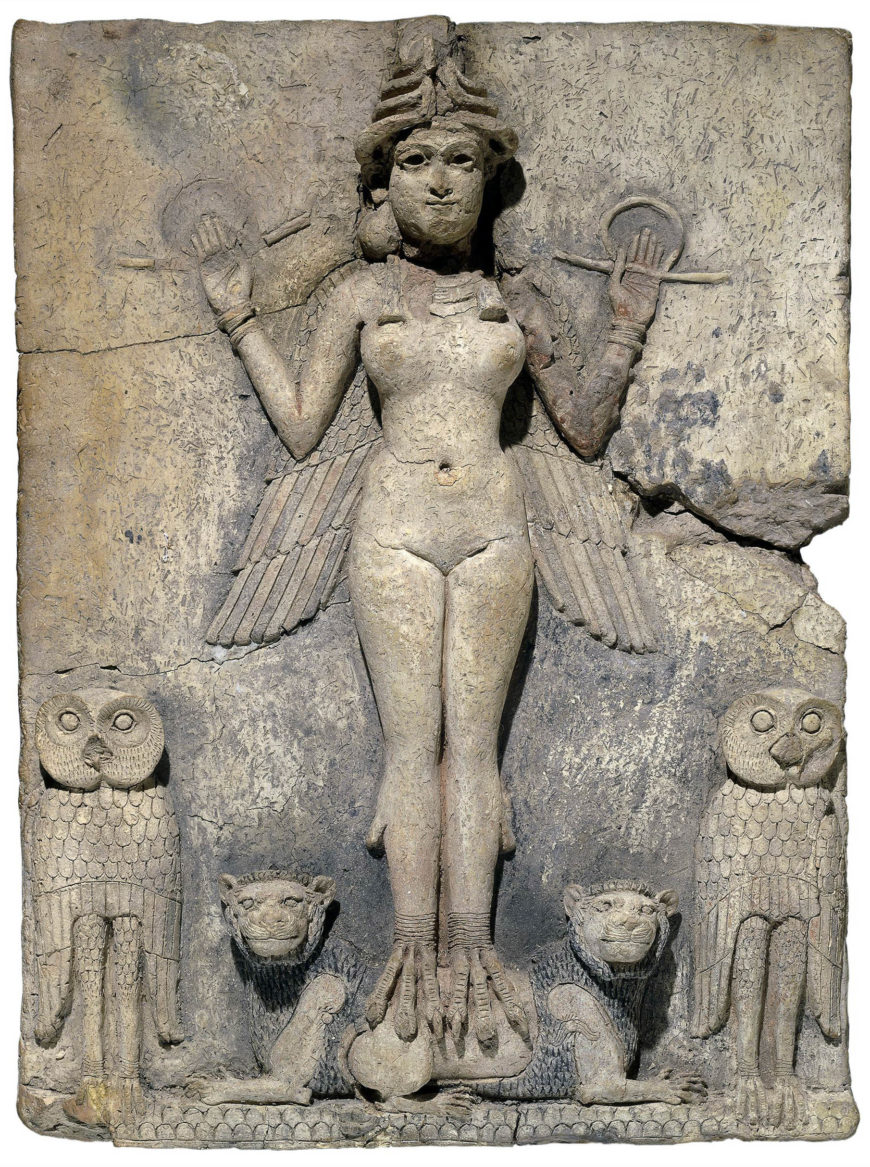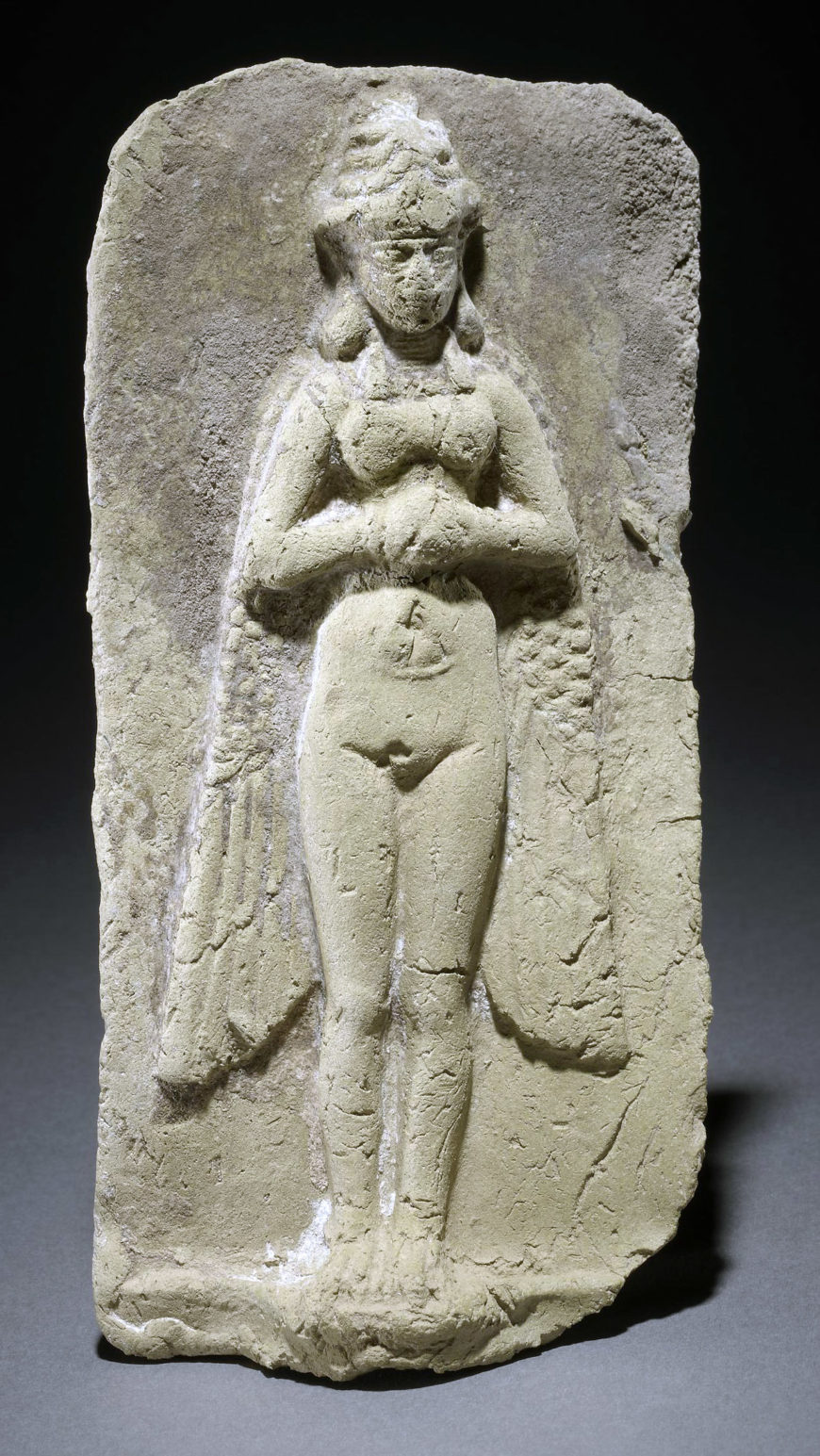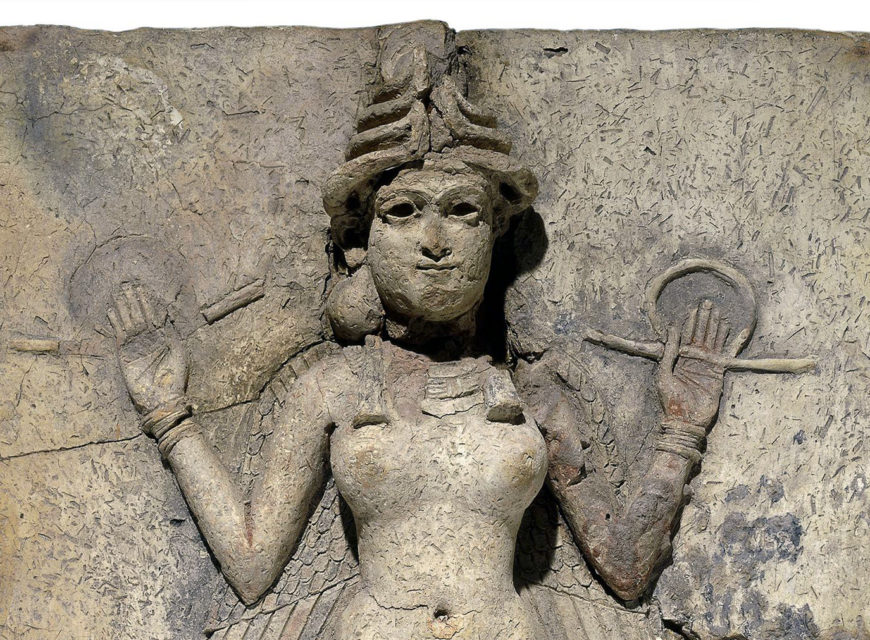
The ‘Queen of the Night’ relief, Old Babylonian, 1800–1750 B.C.E., fired clay, from southern Iraq (© The Trustees of the British Museum)
This large plaque is made of baked straw-tempered clay, modeled in high relief. The figure of the curvaceous naked woman was originally painted red. She wears the horned headdress characteristic of a Mesopotamian deity and holds a rod and ring of justice, symbols of her divinity. Her long multi-colored wings hang downwards, indicating that she is a goddess of the Underworld. Her legs end in the talons of a bird of prey, similar to those of the two owls that flank her. The background was originally painted black, suggesting that she was associated with the night. She stands on the backs of two lions, and a scale pattern indicates mountains.
The figure could be an aspect of the goddess Ishtar, Mesopotamian goddess of sexual love and war, or Ishtar’s sister and rival, the goddess Ereshkigal who ruled over the Underworld, or the demoness Lilitu, known in the Bible as Lilith. The plaque probably stood in a shrine.

Fired clay plaque, Old Babylonian, c. 1750 B.C.E., found in southern Iraq, 17.5 cm high (© Trustees of the British Museum)
The same goddess appears on small, crude, mould-made plaques from Babylonia from about 1850 to 1750 B.C.E. Thermoluminescencetests confirm that the ‘Queen of the Night’ relief was made between 1765 and 45 B.C.E.

The ‘Queen of the Night’ relief (detail), Old Babylonian, 1800–1750 B.C.E., fired clay, from southern Iraq (© The Trustees of the British Museum)
The relief may have come to England as early as 1924, and was brought to the British Museum in 1933 for scientific testing. It has been known since its publication in 1936 in the Illustrated London News as the Burney Relief, after its owner at that time. Until 2003 it has been in private hands. The Director and Trustees of the British Museum decided to make this spectacular terracotta plaque the principal acquisition for the British Museum’s 250th anniversary.
© The Trustees of the British Museum
Additional resources:
H. W. and A. F. Janson, History of Art, 6th edition (New York, 2001)
H. Frankfort, ‘The Burney Relief’, Archiv für Orientforschung (1937–39), pp. 128–35
H. Frankfort, The art and architecture of th (London, Pelican, 1970)

